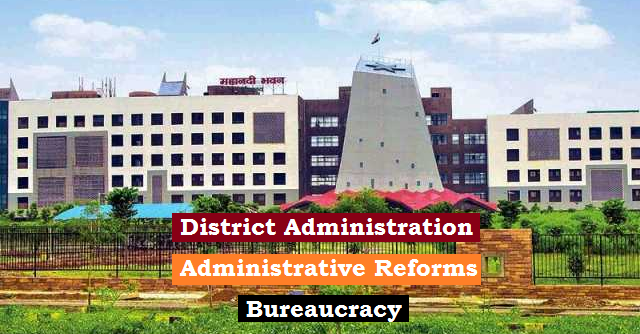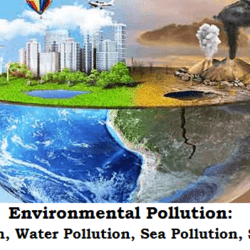
Administrative Reforms
It is an artificial inducement of administrative transformation against resistance. Reform involves persuasion, collaboration and generation of conviction for betterment of administration.
It has three distinct elements:
- It is artificially stimulated.
- It’s a transformatory process.
- There is resistance to change.
Need for Reforms:
- Freeing from the shackles of traditionalism
- Coping with the changes in the environment
- Adopting innovative culture
Types of Administrative Reforms: Reforms are imposed through
- Political change
- Organizational remedy
- Legal system
- Attitudinal change
Administrative Reforms in India:
- After independence, Govt adopted socio-economic development through planning.
- It led to a greater proliferation of activities by the Govt.
- To take up the new challenges administration had to be restructured, reinvented and renewed.
- Various committees were formed to recommend reform measures. Some of them are:
- Paul Appleby Report (1953 and 1956)
- Administrative Reform Committee under K. Hanumanthaiya (1966)
- Kothari Committee (1976)
- Sarkaria Commission (1983)
- Administrative Reform Committee-II under Virappa Moili (2005)
- Punchi Commission (2010)
Bureaucracy
| Bureau: writing table or desk Cracy: rule Bureaucracy: rule of officials |
Bureaucracy is a system of administration under which all the employees are organized into a hierarchy of offices, with well-defined spheres of duties and responsibilities.
Characteristics of Bureaucracy:
- Hierarchy: clear cut division of work, each officer under control and supervision of a higher officer and accountable to superiors
- Professional Qualities: officials selected on the basis of merit
- Rules and procedure: to follow definite rules and procedure
- Specialization: tasks are sub-divided into functionally distinct spheres
- Organizational resources: officials do not won resources but accountable for its use
Changing Nature of Bureaucracy:
- Emergence of welfare state added new dimensions.
- Concept of neutrality has lost significance. Political neutrality means absence of political activity or bias but also to respond to the will of executives.
- ‘Committed Bureaucracy’ does not connote loyalty towards political executives, but towards the ideas of the Constitution.
- Function of politicians and bureaucracy in policy making has ceased to be rigidly divided.
Role of Bureaucracy in Policy Making:
- Informative:
- They provide systematic analysis of an issue and information required for framing.
- They also substantiate policy proposals.
- Suggestive:
- They act as the thing-tank of the Govt.
- They help in issues to be taken for consideration.
- They provide several alternative solutions to a given problem.
- Analytical:
- They analyze the pros and cons of alternative solutions.
- They analyze the policy proposals in relation to the Constitutional provisions.
Delegated Legislation to Bureaucracy:
It is the law-making power conferred by the Legislature on the executives. The delegated legislation is subject to judicial review, like any other legislation.
The increased in volume of work, expertise required for some issues and o deal with unforeseen contingencies delegated legislation is needed.
District Administration
The District Administration is the focal point for field level organizations and implementation of all government contingency plans related to disaster management. Considerable powers have therefore been vested in the District Collector to carry out operations effectively in the shortest possible time.
Collector is the most recognized face of the administration; he is considered to be the principal representative of the government at the district level, who could be approached to solve virtually all problems ranging from land disputes, scarcity of essential commodities, relief in times of crisis, community disputes, etc.
The District Administration is required to prepare in advance a contingency district disaster management plan depending on the type of disasters likely in the district. Contingency Plans are required to keep into account the type of preparedness and the relief material required to be mobilized.
The concerned departments need to work together in a coordinated manner and provide an efficient feedback and monitoring system to the District Collector.
Role of the Collector in District Administration:
The office of the Collector is an important institution transmitted by the British rulers to the Indian administrative system. He performs traditional revenue function as well as development functions. Throughout the country, the power and functions of the Collector, more or less, remain the same.
Broadly, the Collector performs the following functions:
- Head of Revenue Administration:
- Though after independence, the emphasis has been shifted to development administration; the Collector continues to be the chief revenue officer in the district.
- Maintenance of land records and collection of statistics at the village level are some other functions of the Collector.
- He exercises appellate jurisdiction in revenue cases.
- As the Head of the Revenue Administration, he is the kingpin of relief operations in the district. In emergency situation like floods and famines the Collector plays a very crucial role in relief operations.
- Head of Police Administration:
- District Collector also functions as District Magistrate and is responsible for the maintenance of law and order in the district.
- In this function, Superintendent of Police who is the Head of police force in the district helps the Collector in discharge of his police functions.
- Head of District Administration:
- As a Head of the district administration, he plays a coordinating role between different Departments like Revenue, Police and other Departments in implementation of developmental activities in the district.
- He is directly responsible for the distribution and control of all essential commodities and goods. He issues licenses for trading in food grains and other commodities.
- In respect of Panchayati Raj, he has a very important relationship with the Panchayati Raj bodies.
- An agent of the Government:
- He is considered to be the principal representative of the government at the district level.
- The Collector presides over a large number of meetings like meetings of Coordination Committee, Development Committee, and Irrigation Committee etc.
- Any function of the Govt which is not allocated to any department, comes with the jurisdiction of the Collector.
- Census operations and conduct of elections to various democratic bodies from the Parliament to the Gram Panchayat is another important function.

 Home
Home Syllabus
Syllabus Contact Us
Contact Us




